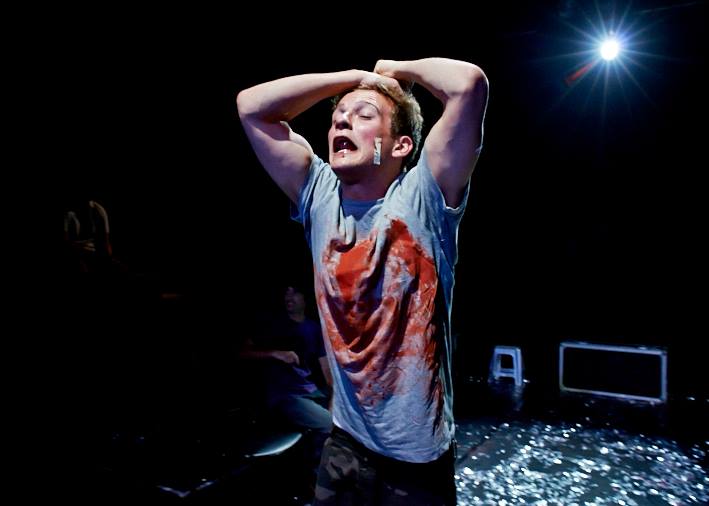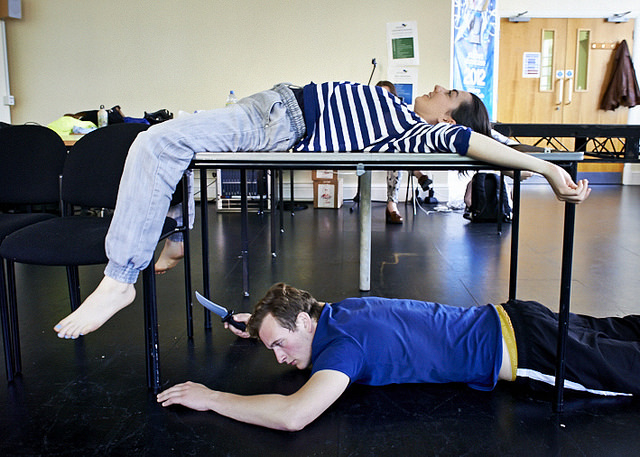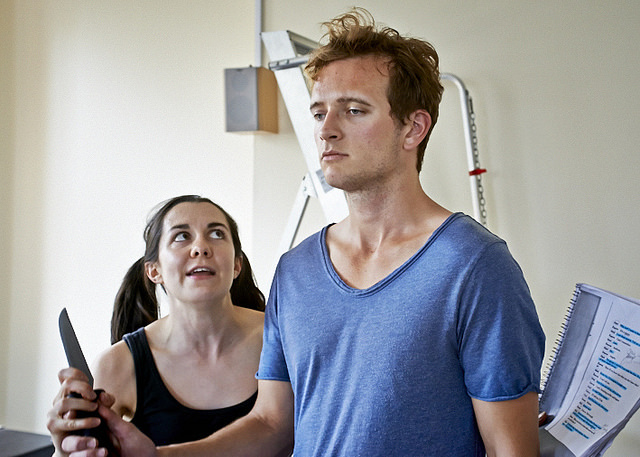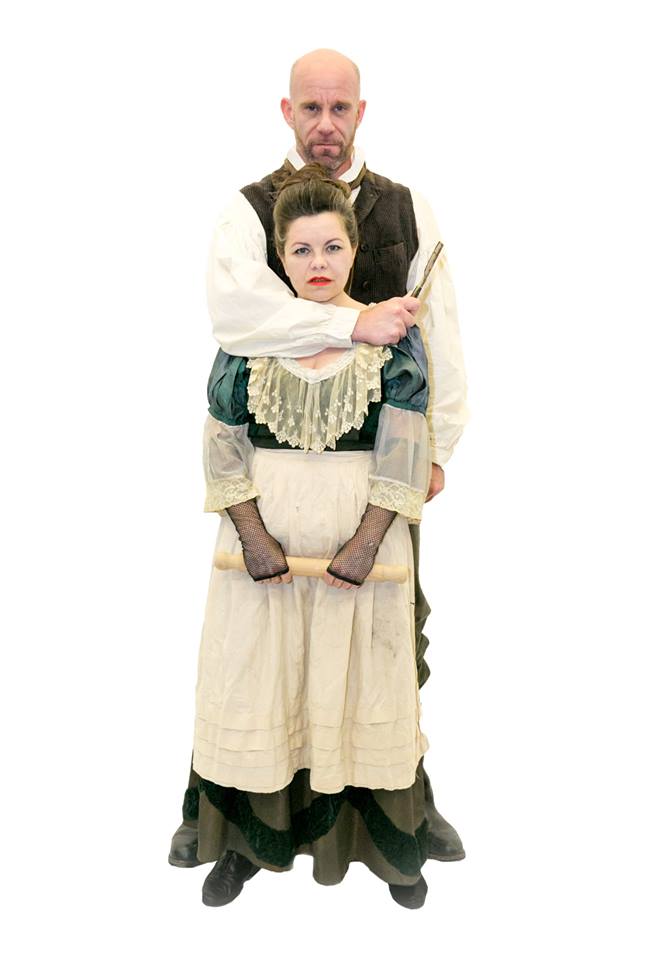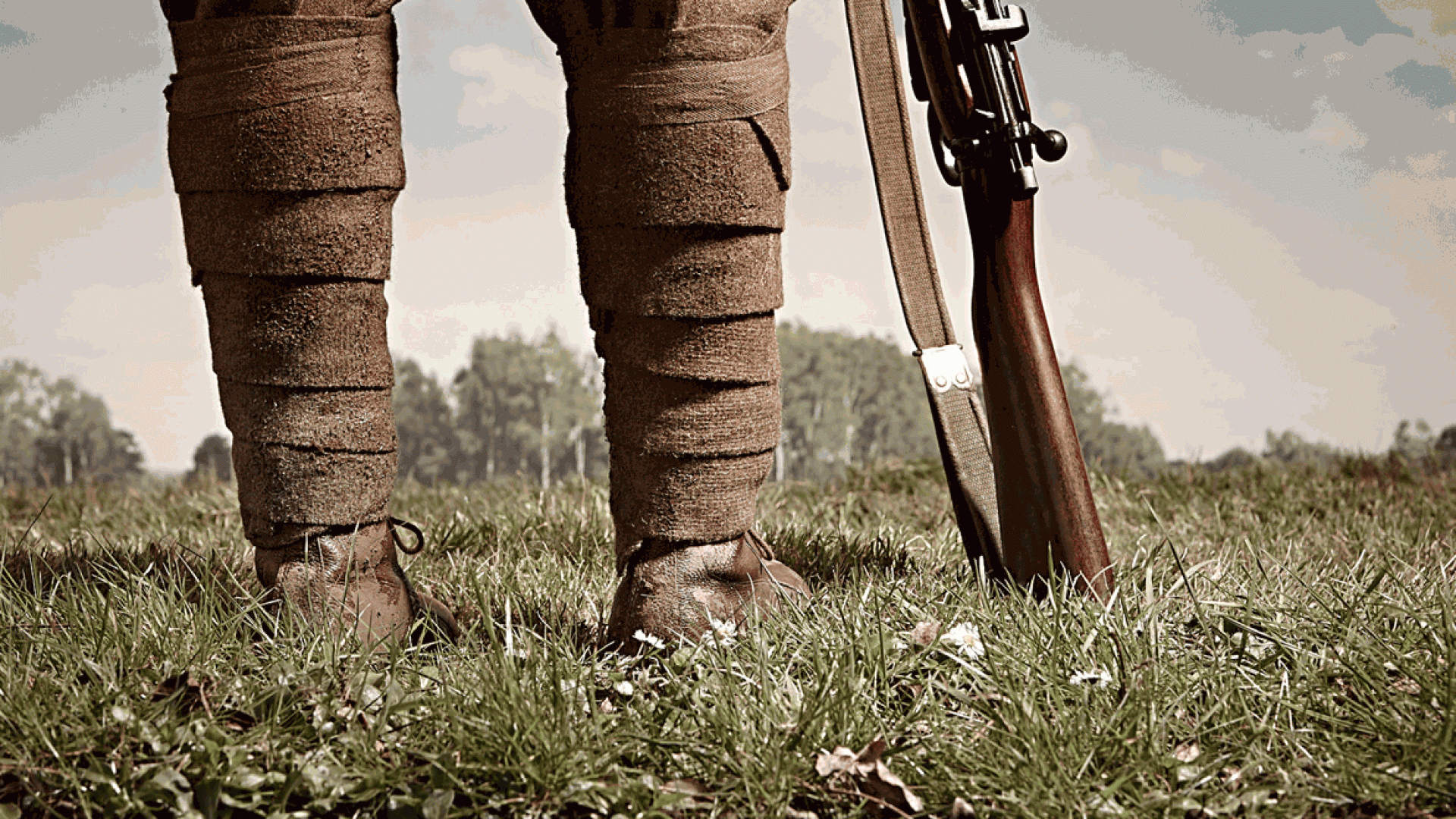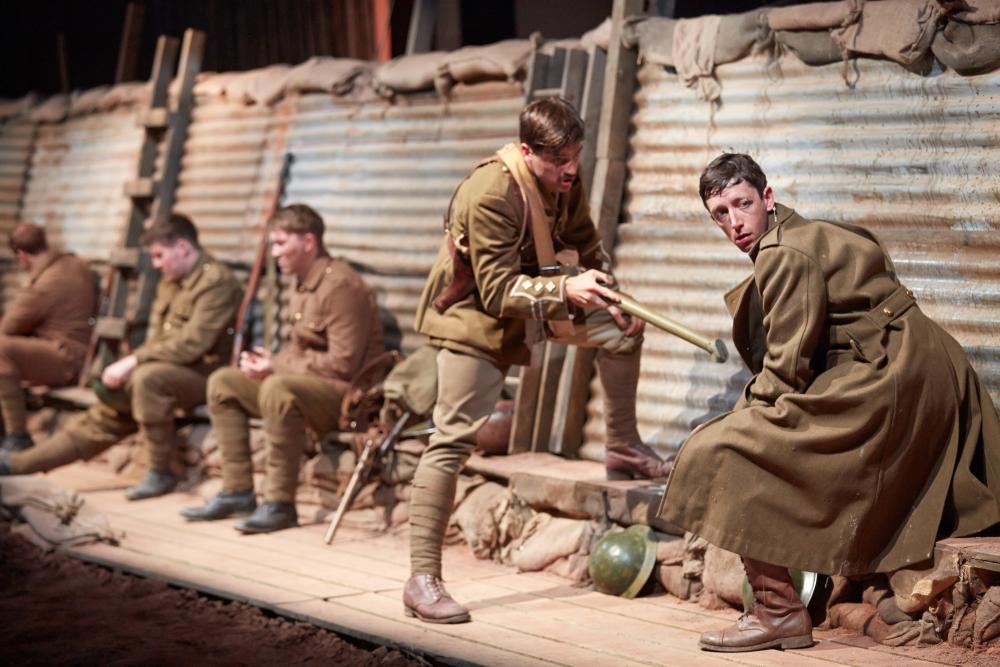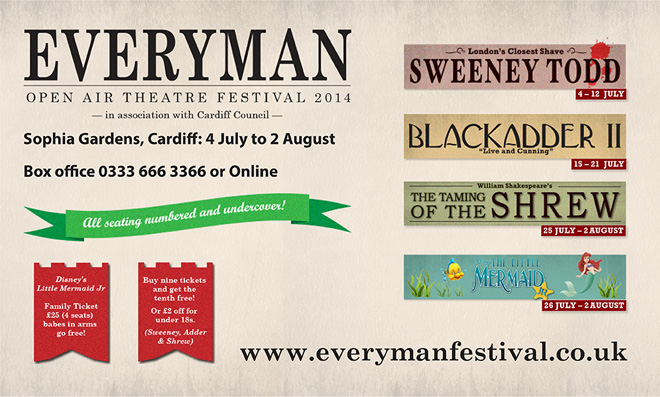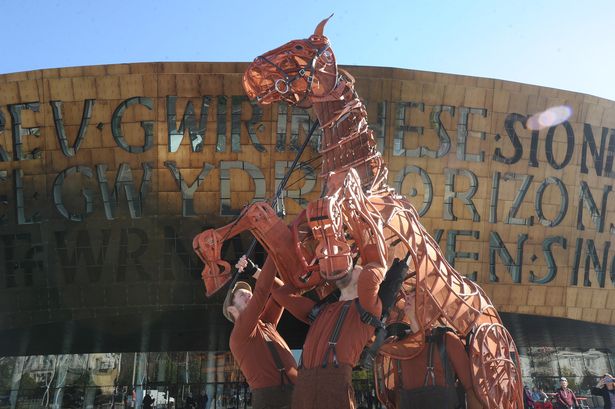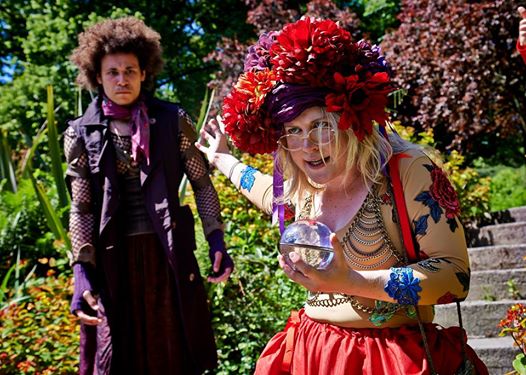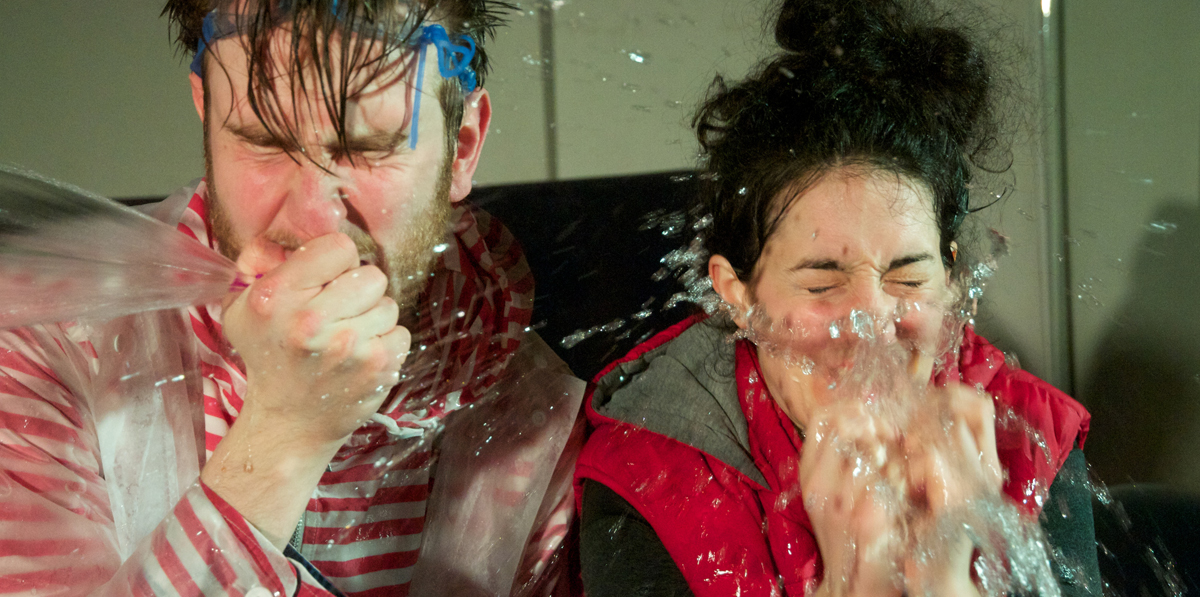roberto zucco review copy
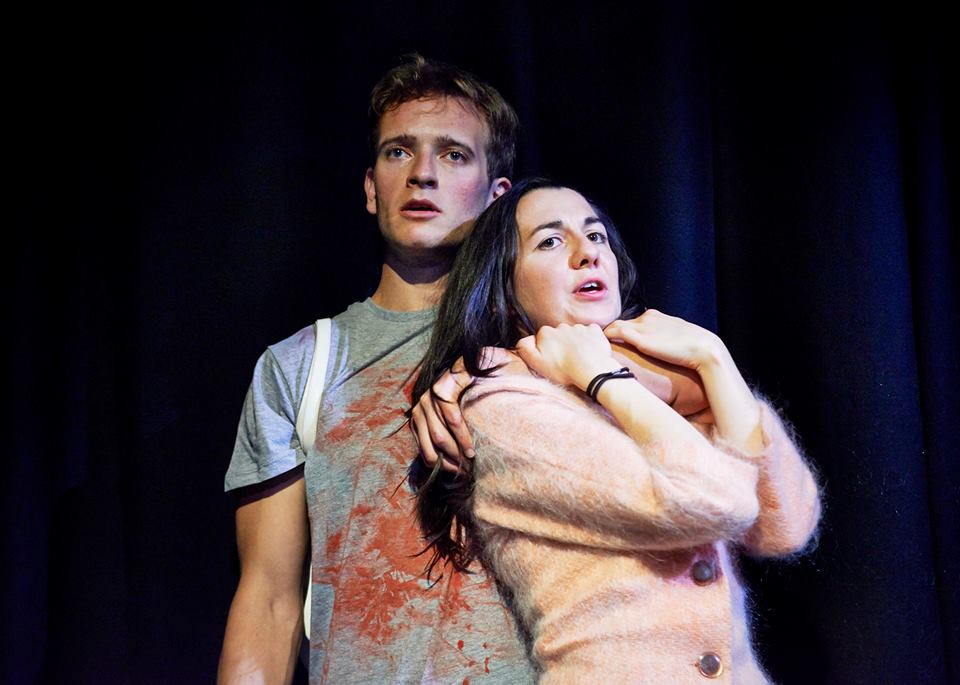
Production Photograph’s by Jorge Lizalde – studiocano.co.uk
A serial killer expressed in an empathetic way?
You wouldn’t have thought it possible but Bernard- Marie Koltés play ‘Roberto Zucco’ does this justice. Roberto Zucco, the infamous 1980’s Italian serial-killer, murdered his parents, two police officers, women and a child, he was broadcast by the media as the monster he was. Then Koltés play was released. The only way to give justice to this play is to take audacious risks and convincing characterisation and the theatre company, August012’s did this exceptionally well!
It was evident as you stepped into the traverse layout performance space that you needed to leave all expectations of normality behind. The shimmering silver confetti on the floor and the way the actors moved around the audience before the play had even begun, gave an insight to their characters, which consequently brought this play to life instantly !
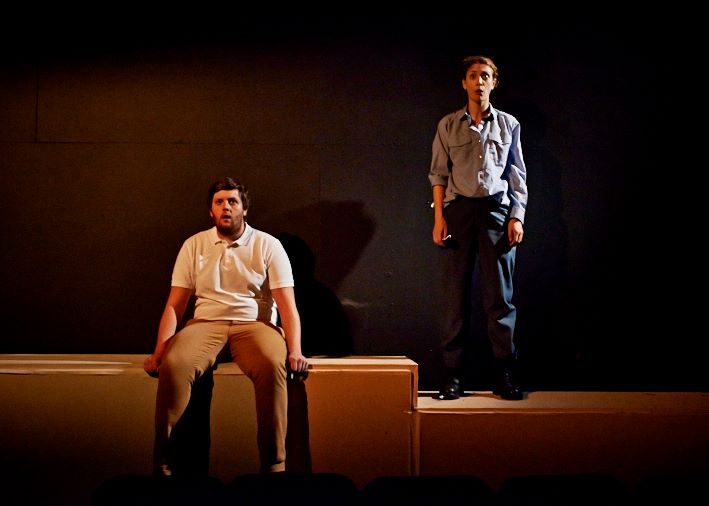
The gripping nature of the production in part due to the actors limitless abilities as they effortlessly stepped into different characters. Each character brought a highly entertaining twist that took the audience by storm. Bethan Mai embodied every character she played with such ease and allurement that it grasped the audience completely. John Norton gender swapped, pimp-played, became a fragile old man and other characters you wanted to loathe and love. Nevertheless he delivered the most laughs. John achieved his roles with such conviction that you had to think twice if it was really the same person acting. Joanna Simpkins with her beautiful yet bold characterisations, delivers with such strength that the audience tuned in to every word she said. Last but not least, Adam Redmore took the role of the protagonist Roberto Zucco in his stride. Even though this is the only concrete character in the play, Adam’s performance was outstanding as he delivered passion beneath the psychotic words and the mesmerising gaze which enthralled the audience. The fact we sympathise with his character the most unsettled the audience due to the realisation that he was a serial killer!
One of the other fascinating elements this production offered was the original and talented aspects of the choir. They produced non-diegetic music that supported the fast-paced interchanging scenes. This created an intoxicating energy that engulfed the audience and enhanced the performance. Their voices sung with angelic clarity brought an unnerving oxymoronic presence to any darkness created in the scene !
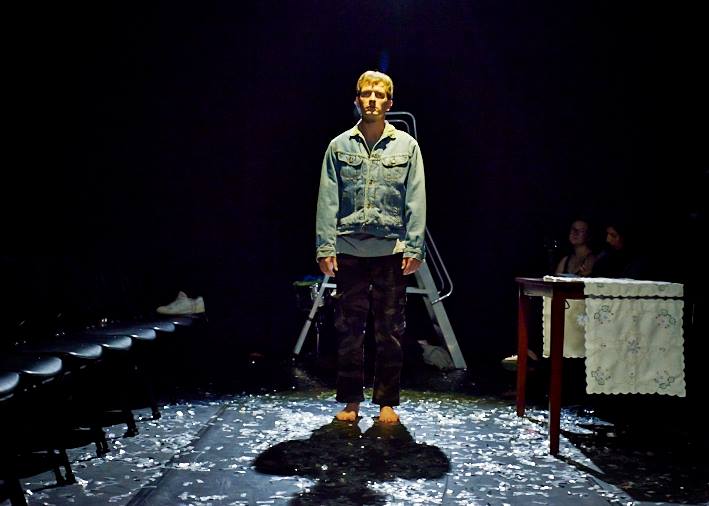
However nothing could have prepared the audience for what they themselves brought to the performance. The high level of audience interaction kept us on the edge of our seats throughout. Without spoiling anything it certainly was an experience worth experiencing!
Director Mathilde López knows no boundaries and has once again created a work of art that excites and captivates the audience with black comedy throughout. Grab a ticket and see for yourself what August012’s company has to offer, changing the way we view theatre in Wales.


